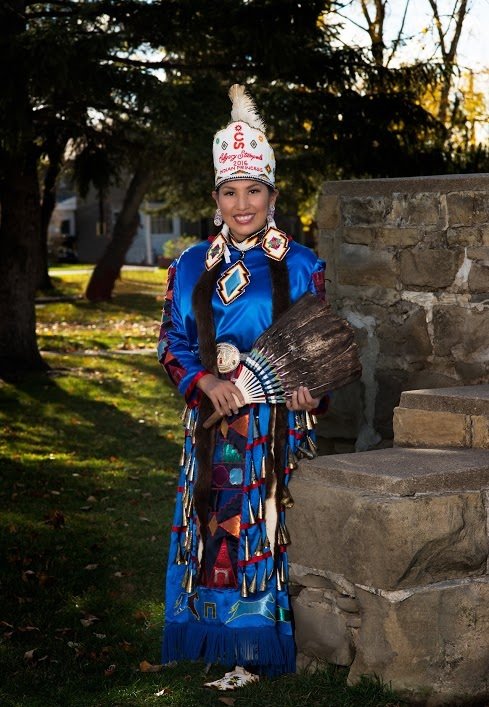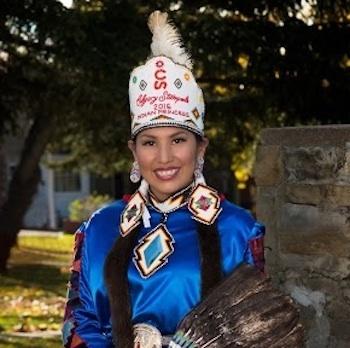Image Caption
By Shari Narine
Sweetgrass Contributing Editor
CALGARY
June 30, 2016.
The Calgary Stampede has a history that spans over one hundred years with Treaty 7 peoples.
“They created a safe cultural space in the Indian Village,” said Cindy Provost, a member of the Piikani First Nation. “They showed extraordinary vision. We’re still here celebrating that same opportunity to come celebrate who we are, the best parts of who we are as a people and to showcase that in front of the world.”
That relationship and vision will continue this July when Indian Village is opened on a parcel of land almost two and a half times larger than was previously occupied.
The 16-acre space along the Elbow River is the result of a multi-million dollar investment and partnership between the Calgary Stampede, Calgary Stampede Foundation and Enmax. This was once a significant area for camping and crossing for the Treaty 7 Confederacy. Now, it will serve as the new location for the Indian Village.
The additional user space will mean Indian Village will have more to offer, says Provost, including enhanced interpretive programming. A pilot program will see interpreters talk about how First Nations people lived before they started using horses and then how horses were immersed into the culture and the changes horses brought in their everyday life with mobility and trade.
“We’ll be looking at the horse through a cultural lens and for that interactive piece to happen hands-on with the horse and there will be Elders involved as well,” said Provost, who is also on the Calgary Stampede Indian Village committee.
There will be no change to the number of tipis raised this year. However, there will be more artisans and crafters, who will be located indoors in a new building. There will also be outdoor picnic space and green areas available for visitors.
Signage on the Calgary Stampede grounds will be used to direct visitors to the new location for Indian Village.
Provost, who is also the Aboriginal liaison for the Calgary Police Service, says the relationship between Treaty 7 and the Calgary Stampede is strong. It started in 1912 with Guy Weadick’s supporters lobbying both the provincial and the federal governments to allow First Nations off their reserves to attend the stampede. It was a time when First Nations people required permission to leave their reserves.
“I believe Calgary Stampede should be very proud of the foundation of the partnership and collaboration they achieved for 104 years with the traditional people of this territory,” said Provost.
Moving forward, she says, the Calgary Stampede and Treaty 7 will be working together to address the calls to action delivered by the Truth and Reconciliation Commission. How that will be tackled has yet to be decided.
“(The Indian Village) s is one of the oldest examples of an investment in a living relationship and a unique celebration of culture that exists in this traditional territory, if not in the world, that marks reconciliation,” said Provost.
Provost adds that year-round programming on the site will also be explored.
The Calgary Stampede runs July 8-17.

Vanessa Stiffarm, from the Blood Tribe, represents Treaty 7 as the 2016 Calgary Stampede Indian Princess. (Photo: www.indianvillage.ca)

